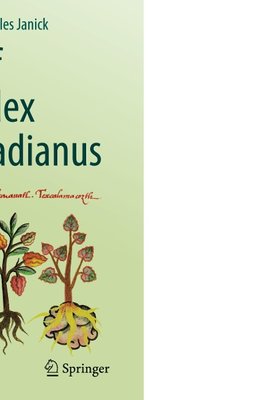
-
 Anglický jazyk
Anglický jazyk
Flora of the Codex Cruz-Badianus
Autor: Jules Janick
In 1929, Charles Upson Clark (1875-1960), a history Professor at Columbia University carrying out bibliographic research on the early history of the Americas in the Vatican Library, came across a remarkable illustrated Latin manuscript entitled Libellus...
Viac o knihe
Na objednávku, dodanie 2-4 týždne
217.79 €
bežná cena: 241.99 €
O knihe
In 1929, Charles Upson Clark (1875-1960), a history Professor at Columbia University carrying out bibliographic research on the early history of the Americas in the Vatican Library, came across a remarkable illustrated Latin manuscript entitled Libellus de Medicinalibus Indorum Herbis (Little Book of Indian Medicinal Herbs) completed in 1552. The manuscript now known as the Codex Cruz-Badianus (CCB) contained 185 illustrations (phytomorphs) of plants with text that described their medicinal uses. This manuscript spread new light on botanical and medicinal knowledge of the indigenous peoples of Mexico known today as the Nahuas or Aztecs. It was to have major repercussions on our knowledge of Aztec culture and the history of New Spain in the 16th century.
The herbal dedicated to the Viceroy Francisco de Mendoza was sent to Spain as a gift to King Carlos I soon after its completion in 1552. The original ended up in the Vatican Library until 1990 when John Paul II returned it to Mexico. In 1931, the Mayanist scholar, William Gates, and the biologist Emily Walcott Emmart became aware of the manuscript and independently translated it to English. In 2009, Martin Clayton, Luigi Guerrini, and Alejandro de Avila identified plants of the CCB based on Emmart's book and a 17th century copy found in the Windsor library. Of the 185 phytomophs, Gates identified 85 on the generic level, Emmart 9, and Clayton et al. 126. However most of these identifications disagree. In the present work, 183 of 185 phytomorphs are systematically re-evaluated and identified on the generic, as well as specific level, along with their botanical descriptions, previous identifications, putative identification, distribution, names, and uses.
- Vydavateľstvo: Springer International Publishing
- Rok vydania: 2021
- Formát: Paperback
- Rozmer: 235 x 155 mm
- Jazyk: Anglický jazyk
- ISBN: 9783030469610
Odporúčané tituly:
Generuje redakčný systém BUXUS CMS spoločnosti ui42.












